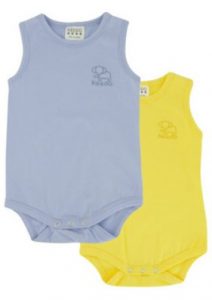Baby
Breastfeeding – Latching
I keep hearing how important latching is. How will I know if my baby is correctly latched?
Firstly you should check that your baby has more than just your nipple in baby’s mouth. The nipple itself should not hurt during feeding (unless you have cracked nipples or a nipple problem). The baby should have a good mouthful of breast tissue in baby’s wide open mouth, and there should be more of the dark area of the nipple visible above the top lip than below the bottom lip. Baby’s lips should not be rolled inwards but rather splayed out over the breast. Sometimes if the baby is sucking only on the nipple a clicking sound will be heard.
When sucking the baby should have regular sucking action and be stopping for breathe every few sucks. Check to see if baby’s ears are wriggling, indicating strong motion of bottom jaw. The chin and tip of baby’s nose should be touching the breast.
If your baby is very sleepy or struggles to latch, try the following tips. It is vital that you make sure that you both relaxed and comfortable before attempting feeding. You need to have as little distraction as possible, and baby will pick up very quickly if you are struggling. So take a few deep breathes! Now make sure that you have plenty of contact with baby and especially naked skin contact. Wake baby by stroking the skin – you will soon figure out which part of the body is sensitive and best able to wake baby. Once awake, hold baby in your arms and stroke the mouth with your nipple to encourage the start of feeding. Baby can be encouraged to seek the breast if you express some colostrum directly onto baby’s lips. Make sure you are sitting up straight and bringing the baby up to the breast, instead of hunching over and pushing the breast into the baby’s mouth. The let baby do the work and take the breast.
If you do need to take the baby off the breast for any reason, use your little finger to break the suction on your breast, before moving the baby off. Pulling without breaking the suction can cause pain.
See also:
Breastfeeding – After Caesarean
Breastfeeding – Alcohol to boost milk
Breastfeeding – Basic info
Breastfeeding – Breast infection continuing feeding
Breastfeeding – Breast infection or mastitis
Breastfeeding – Difficulty
Breastfeeding – Effect of exercise
Breastfeeding – Effect of laughter
Breastfeeding – Engorgement Discomfort
Breastfeeding – Engorgement Pain Relief
Breastfeeding – Engorgement Reason
Breastfeeding – Fear
Breastfeeding – Feeding positions
Breastfeeding – Feeding when ill
Breastfeeding – Frequent feeding
Breastfeeding – Importance
Breastfeeding – Increasing Milk
Breastfeeding – In the beginnning
Breastfeeding – Jaundice
Breastfeeding – Leaking Milk
Breastfeeding – Let-down Reflex
Breastfeeding – Medication
Breastfeeding – Milk Consistency
Breastfeeding – Milk Release
Breastfeeding – Milk Starting
Breastfeeding – Mother’s Sickness
Breastfeeding – Mother’s Stress
Breastfeeding – Mother’s Thirst
Breastfeeding – Nipples Healing
Breastfeeding – Nipples Painful
Breastfeeding – Nipples Washing
Breastfeeding – Overdue Baby
Breastfeeding – Reasons Not To
Breastfeeding – Restless Baby
Breastfeeding – Second Baby
Breastfeeding – Shape Of Breasts
Breastfeeding – Simplicity
Breastfeeding – Sleepy Baby
Breastfeeding – Some Advantages
Breastfeeding – Watery Breastmilk
Breastfeeding – Weight Loss
Breastfeeding – When To Wean
Breastfeeding – World breast feeding day

Babies 2-Pack Skyway Grow Vests
Buy here from Keedo

What's new in next-level Babycare & Pregnancy...
Never miss a thing

hello@babyonline.co.za • +27 (0)81 885 4683 ![]()
![]()
![]()
*Important : The information provided is for information purposes only. No medical diagnosis or prescription can be inferred or is implied. Please consult your doctor for medical advice.